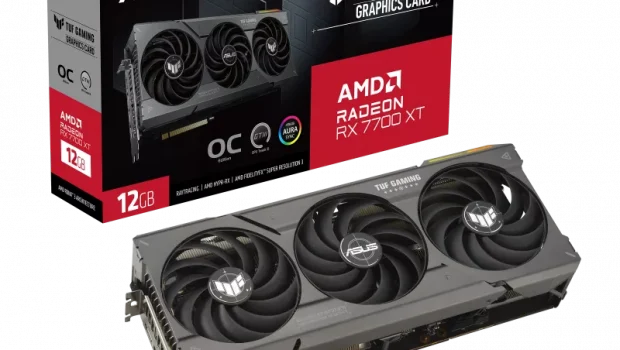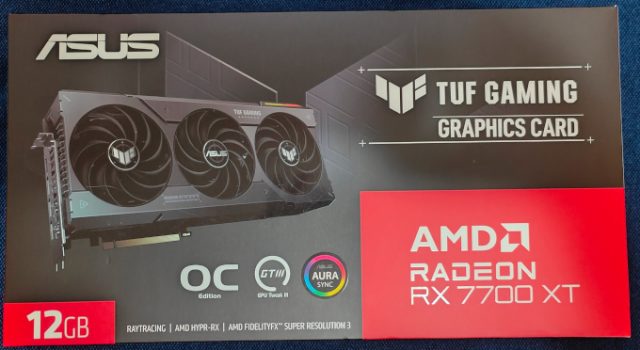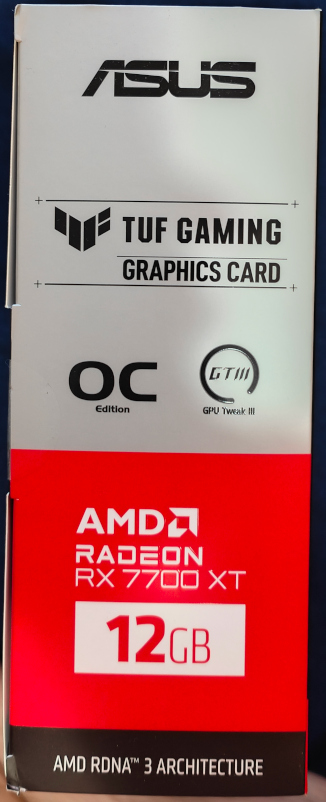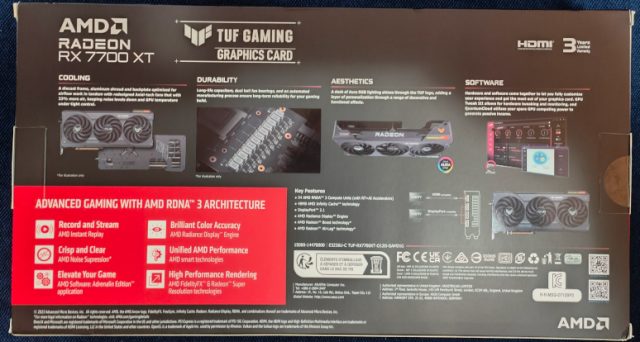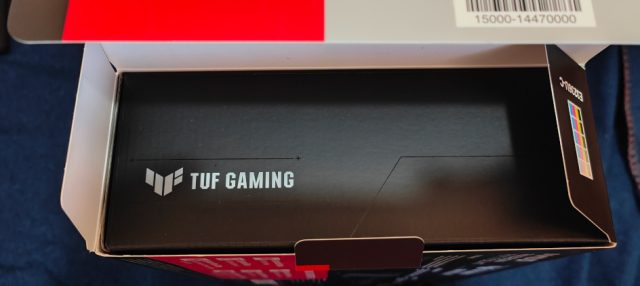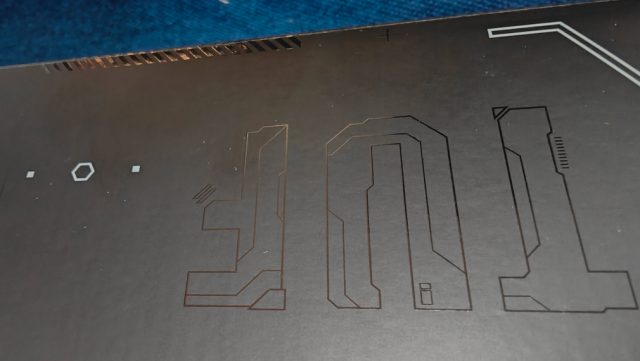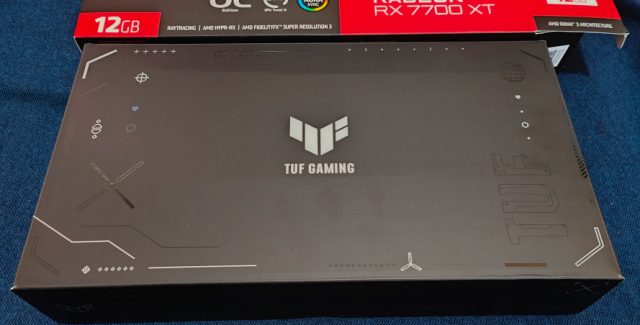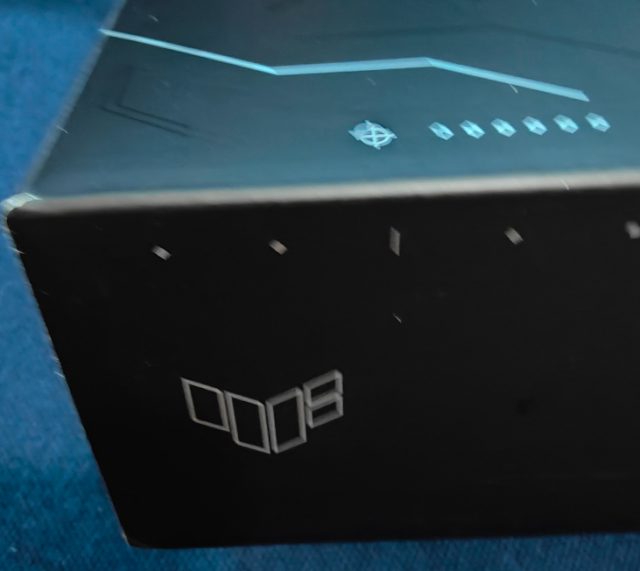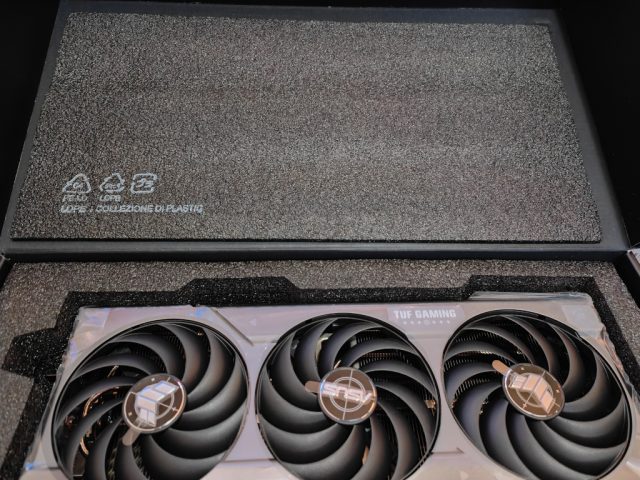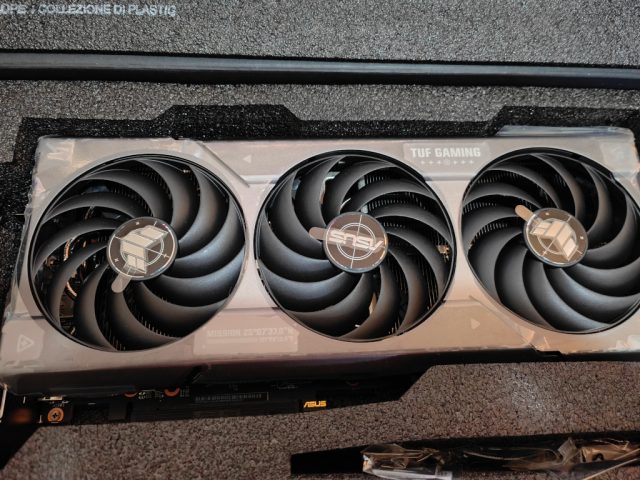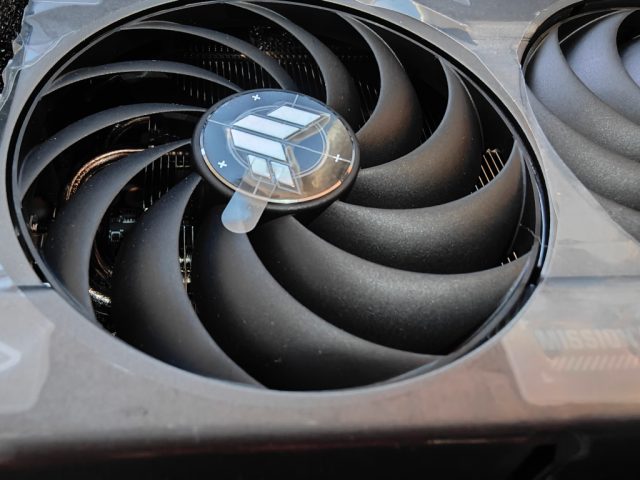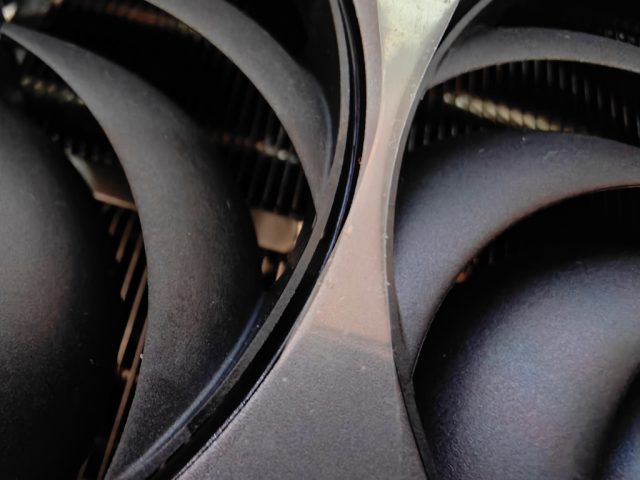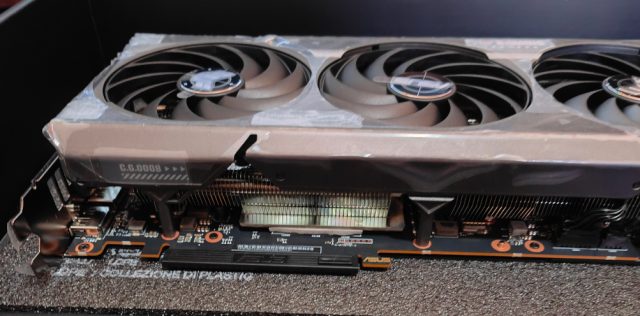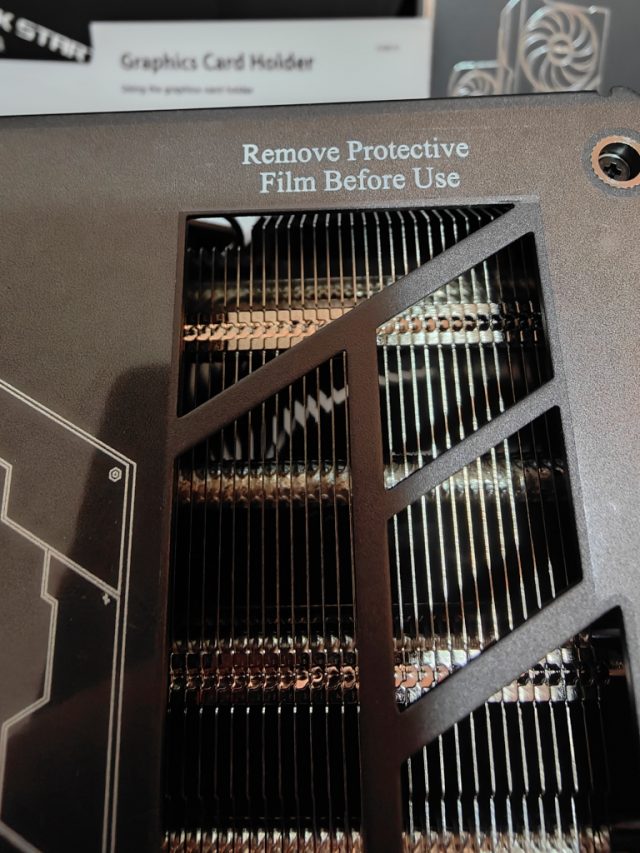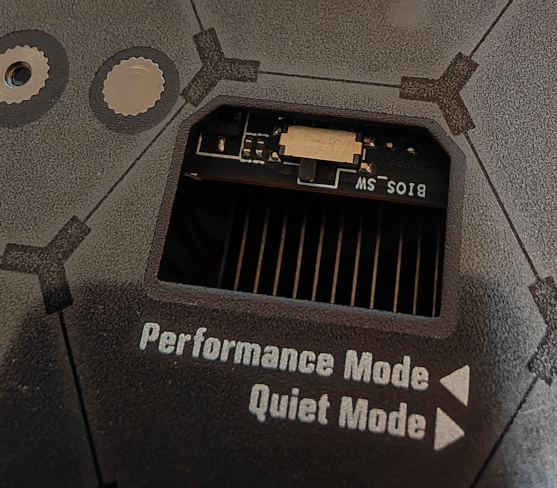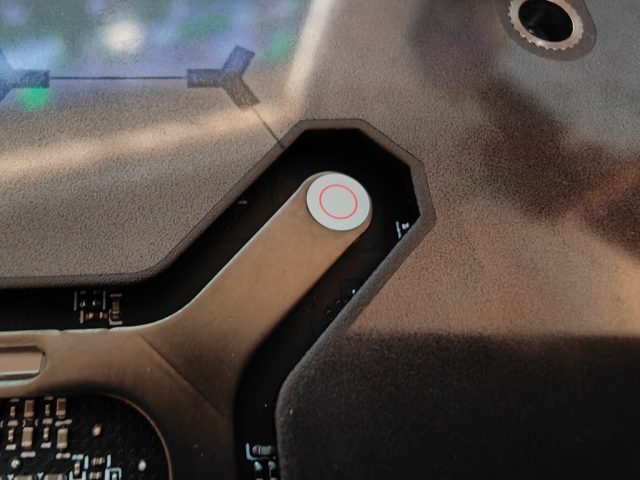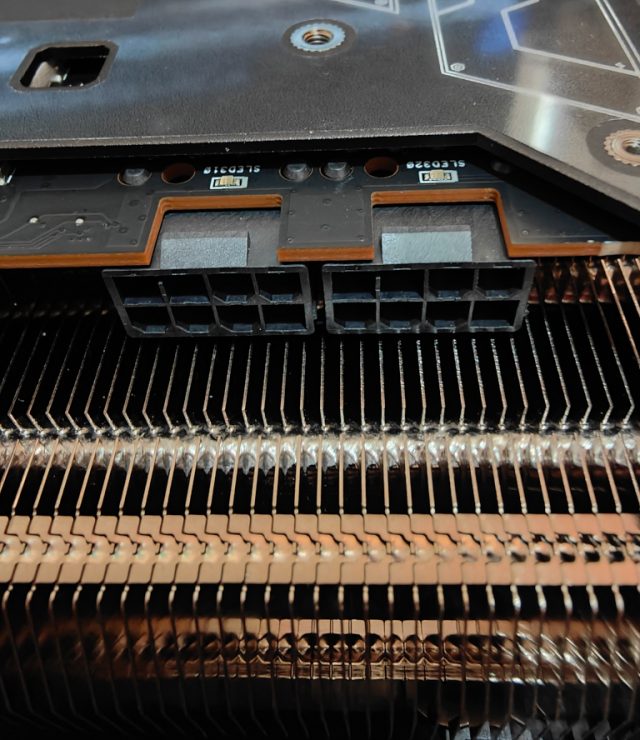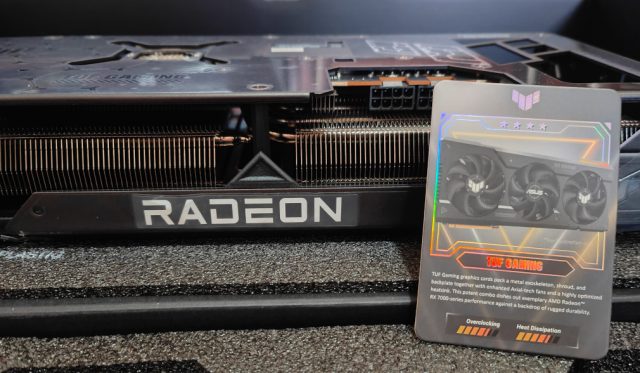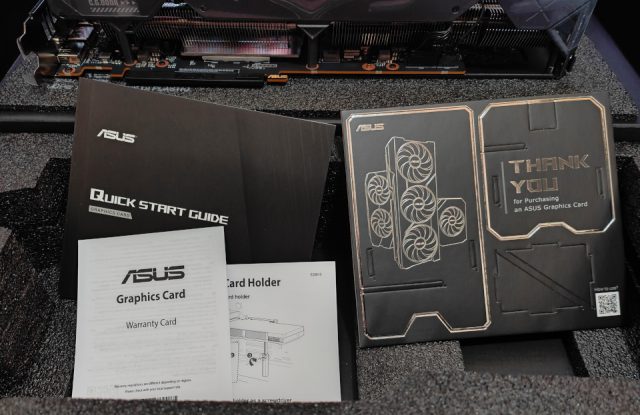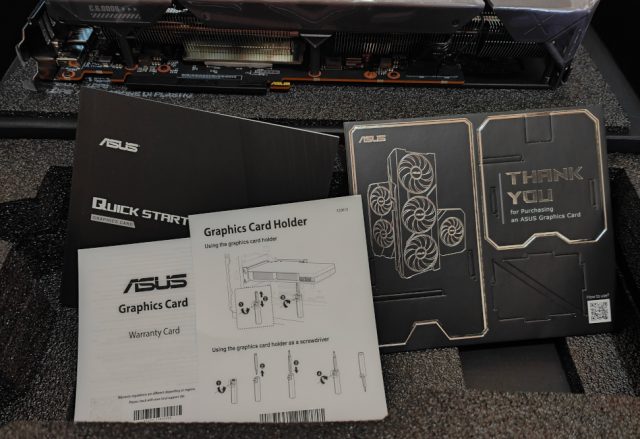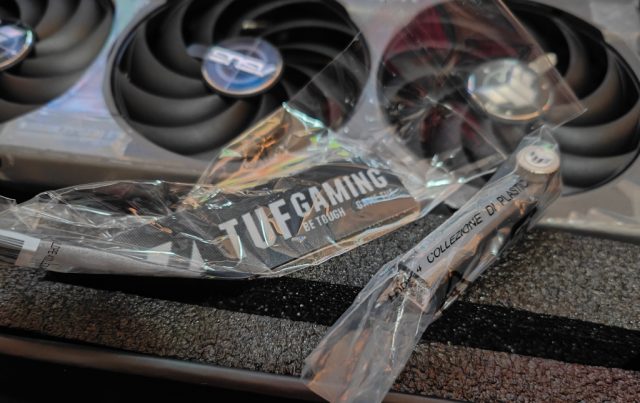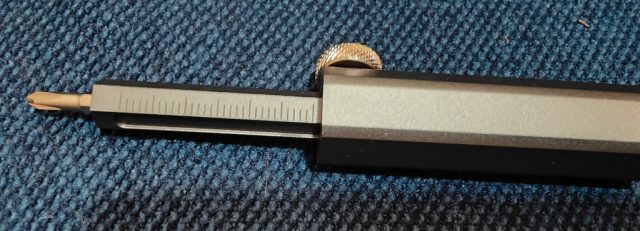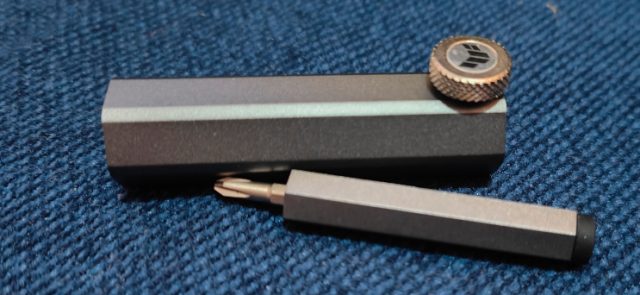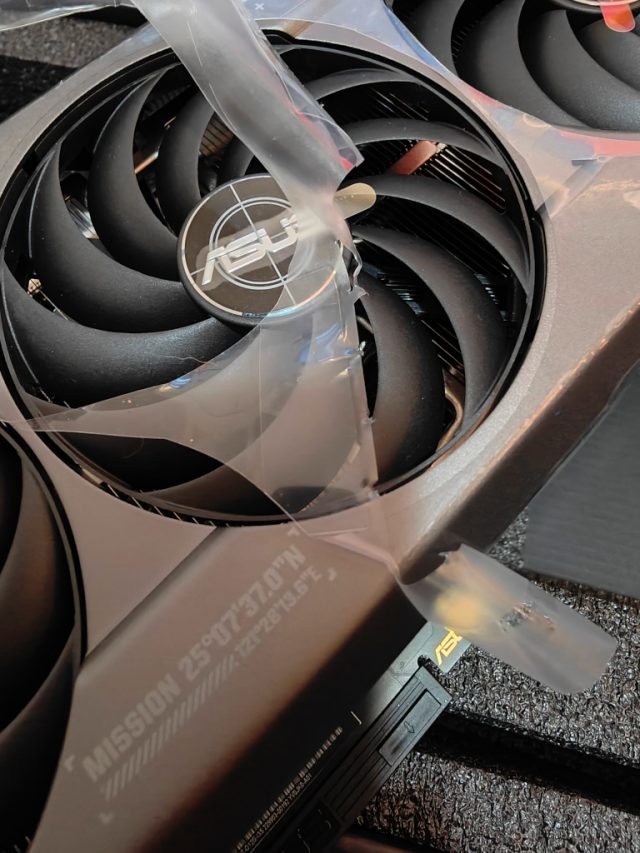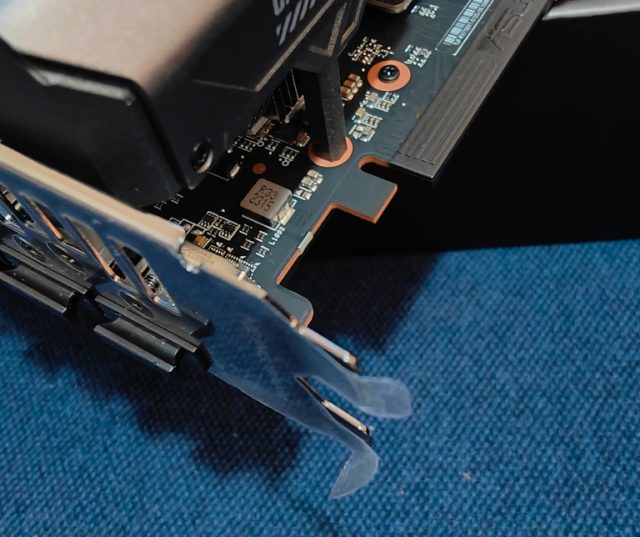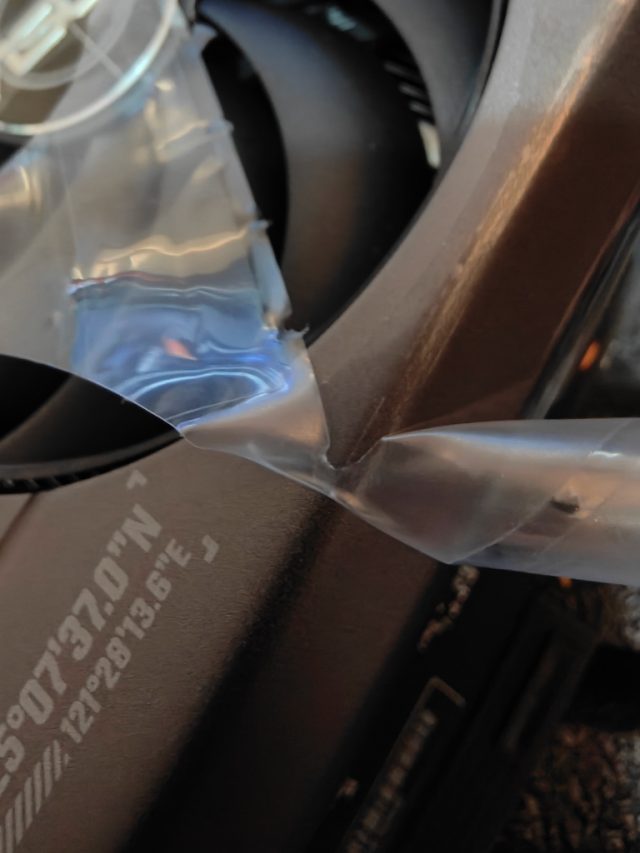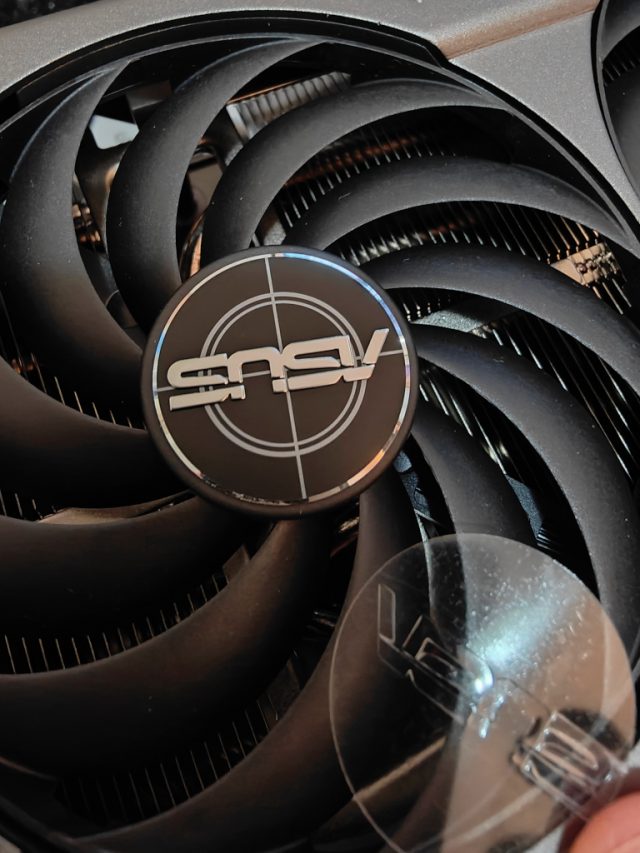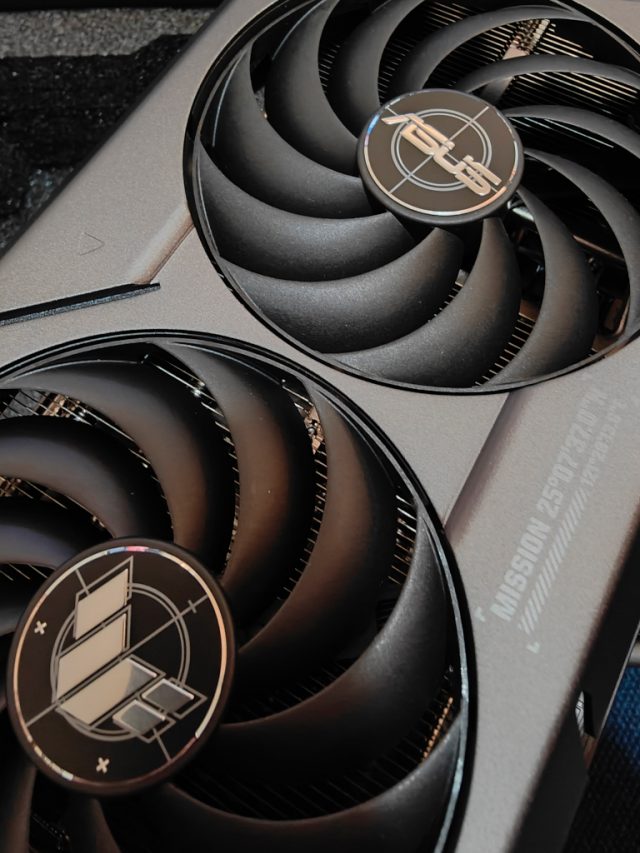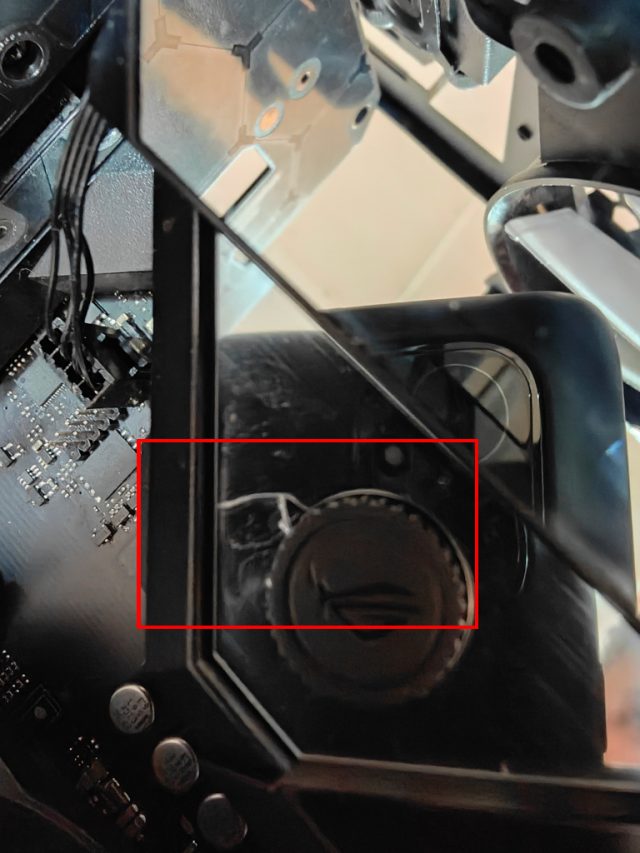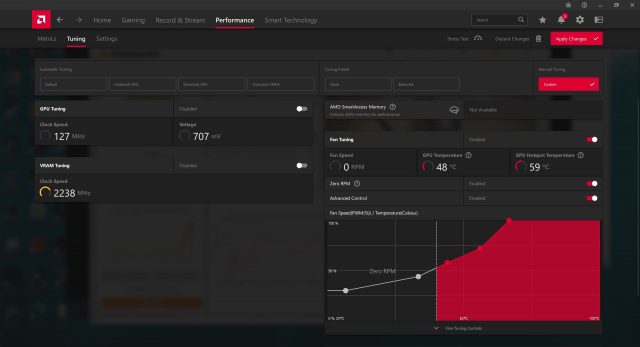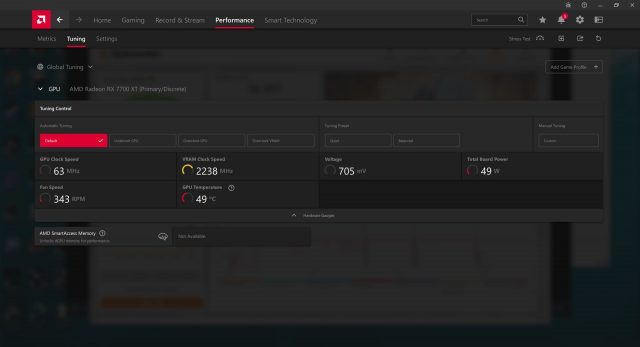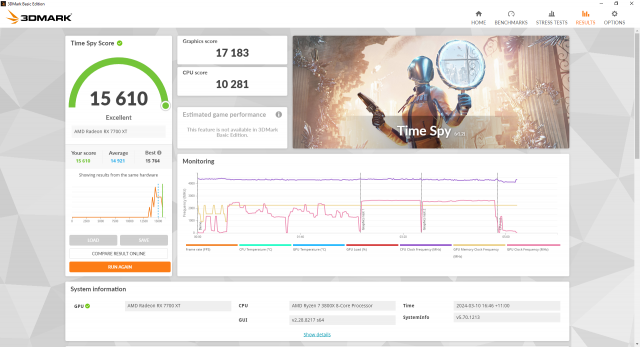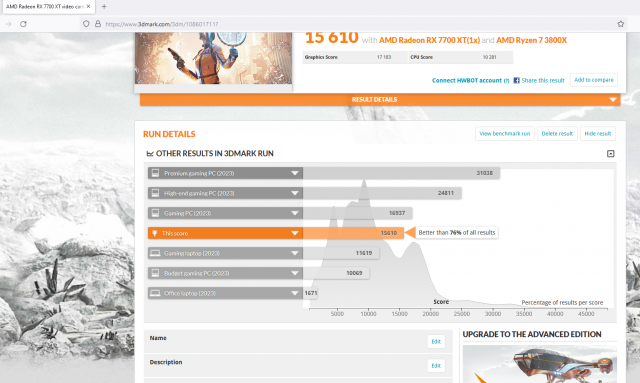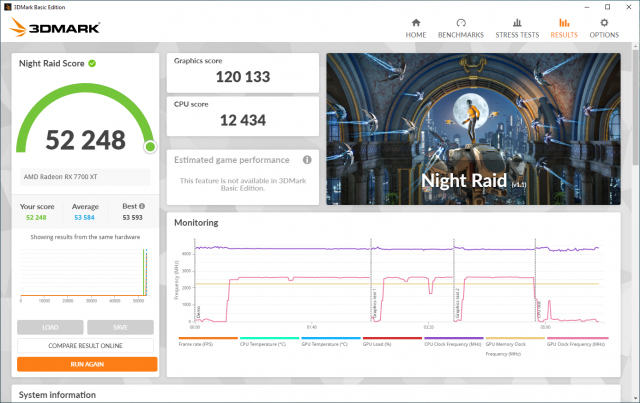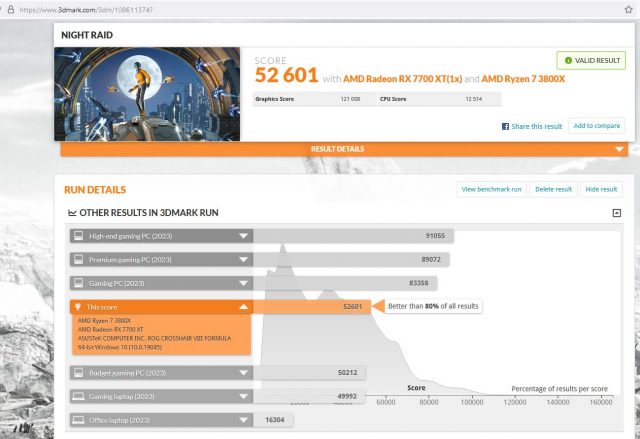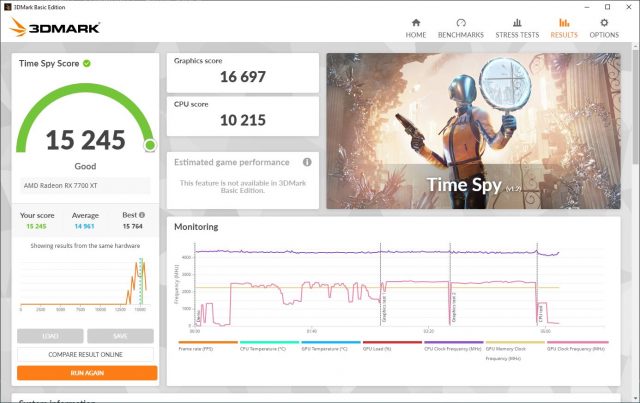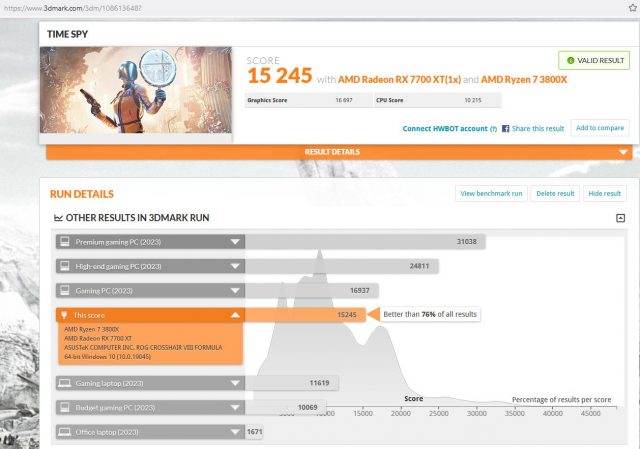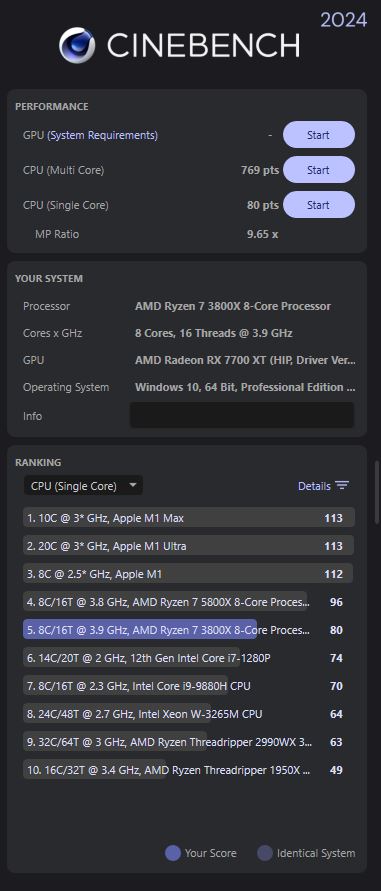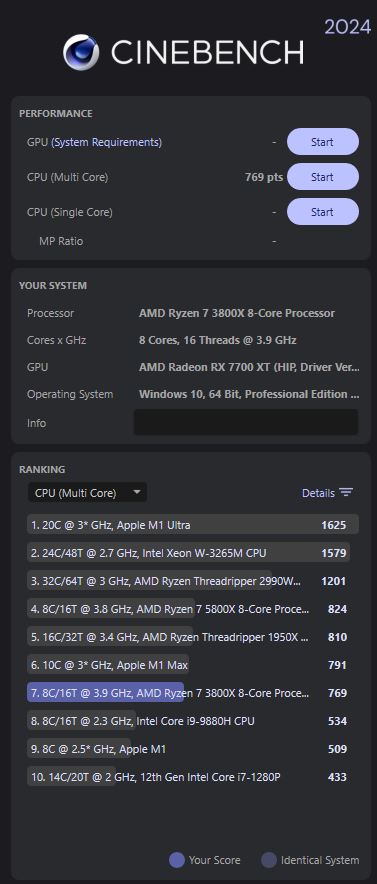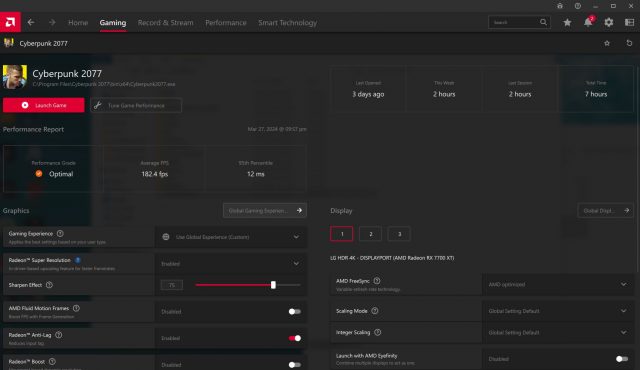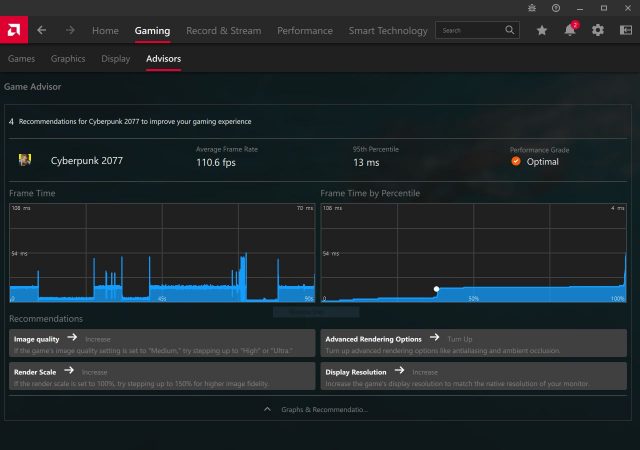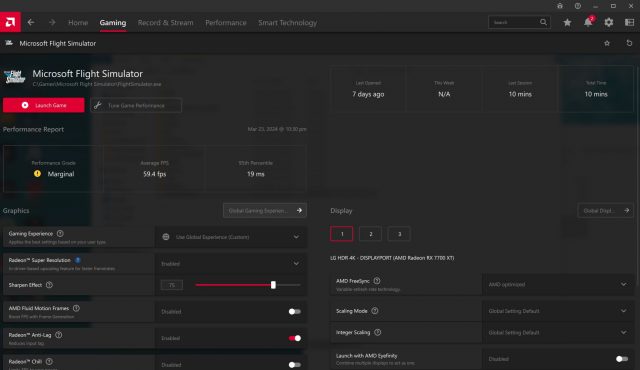ASUS TUF Gaming Radeon RX 7700 XT OC Edition 12GB Review @ASUSAU @ASUS
ASUS TUF series is a Military Grade premium offering that is not only designed to outlast but also outperform the base OEM specifications. In a highly competitive market, the consumer is spoilt for choice and is forced to consider a multitude of factors when choosing their next video card.
The TUF series has a number of contributing factors that push the RX 7700XT performance envelope beyond what can be achieved by default, including a higher clock speed to boost GPU performance, a comprehensive highly engineered cooling system, long life premium components and advanced assembly to increase the life of the video card.
Specifications
|
Model |
TUF-RX7700XT-O12G-GAMING |
|
Graphic Engine |
AMD Radeon™ RX 7700 XT |
|
Bus Standard |
PCI Express 4.0 |
|
OpenGL |
OpenGL®4.6 |
|
Video Memory |
12GB GDDR6 |
|
Engine Clock |
OC mode : up to 2599 MHz (Boost Clock)/up to 2425 MHz (Game Clock) |
|
Stream Processors |
3456 |
|
Memory Speed |
18 Gbps |
|
Memory Interface |
192-bit |
|
Resolution |
Digital Max Resolution 7680 x 4320 |
|
Interface |
Yes x 1 (Native HDMI 2.1) |
|
Maximum Display Support |
4 |
|
NVlink/ Crossfire Support |
No |
|
Accessories |
1 x TUF certificate of Reliability |
|
Software |
ASUS GPU Tweak III & Drivers: please download all software from the support site. |
|
Dimensions |
319.8 x 150.9 x 59.2 mm |
|
Recommended PSU |
750W |
|
Power Connectors |
2 x 8-pin |
|
Slot |
2.96 Slot |
|
AURA SYNC |
ARGB |
Note:
* Our wattage recommendation is based on a fully overclocked GPU and CPU system configuration. For a more tailored suggestion, please use the “Choose By Wattage” feature on our PSU product page: https://rog.asus.com/event/PSU/ASUS-Power-Supply-Units/index.html
* All specifications are subject to change without notice. Please check with your supplier for exact offers. Products may not be available in all markets. If you do not use the latest and current specifications of ASUS products, you shall be liable for all loss and damage claimed by a third party to ASUS based on false advertising or any other issues caused from using false specifications of ASUS products.
* ‘Game Clock’ is the expected GPU clock when running typical gaming applications, set to typical TGP (Total Graphics Power). Actual individual game clock results may vary.
* ‘Boost Clock’ is the maximum frequency achievable on the GPU running a bursty workload. Boost clock achievability, frequency, and sustainability will vary based on several factors, including but not limited to: thermal conditions and variation in applications and workloads.
* If two DisplayPort 2.1 monitors are connected, a third monitor will be limited to DisplayPort 1.4 functionality.
Source: asus.com
Design Features
- Axial-tech fans scaled up to deliver 24% more airflow
- Dual ball fan bearings last up to twice as long as conventional designs
- Military-grade capacitors rated for 20K hours at 105C make the GPU power rail more durable
- Metal Exoskeleton adds structural rigidity and vents to increase heat dissipation
- Auto-Extreme precision automated manufacturing for higher reliability
- GPU Tweak III software provides intuitive performance tweaking, thermal controls, and system monitoring
The ASUS website offers a fantastic visual display of these features, with an interactive exploded view of the video card. This view allows a deeper look at the construction of the video card as well as the cooling system.
Rest assured that “Military Grade capacitors” is not simply a marketing term, it is a military specification that requires a high level standard of reliability and testing of components in order to be acceptable by the military – in this case the Department of Defence (US) as a minimum to be accepted in electronics components. ASUS have sought to adhere to the MIL-STD 810 for their video cards, laptops and high end hardware.
Many may also overlook a key design detail and not realise the significance the RELIABILITY BOOST manufacturing process contributes to a much more reliable assembly of the PCB.
“Reliability Boost
Auto-Extreme Technology is an automated manufacturing process that sets new standards in the industry by allowing all soldering to be completed in a single pass. This reduces thermal strain on components and avoids the use of harsh cleaning chemicals, resulting in less environmental impact, lower manufacturing power consumption, and a more reliable product overall.”
The PCB surface mount components are picked and placed by automated assembly machine, the board heated and presumably wave or infrared soldered. That sounds great right? But considering that the board is double sided, so gravity of placement is a challenge, each component requires different optimal solder heat and time, all of which must be adhered to for keeping within specification, reducing faults and increasing reliability. The incomparable challenges of this is further compounded by the size of components, some of which are less than a 0402(metric) 01005(imp), or simply “smaller than a grain of sand” and weighing about the same!
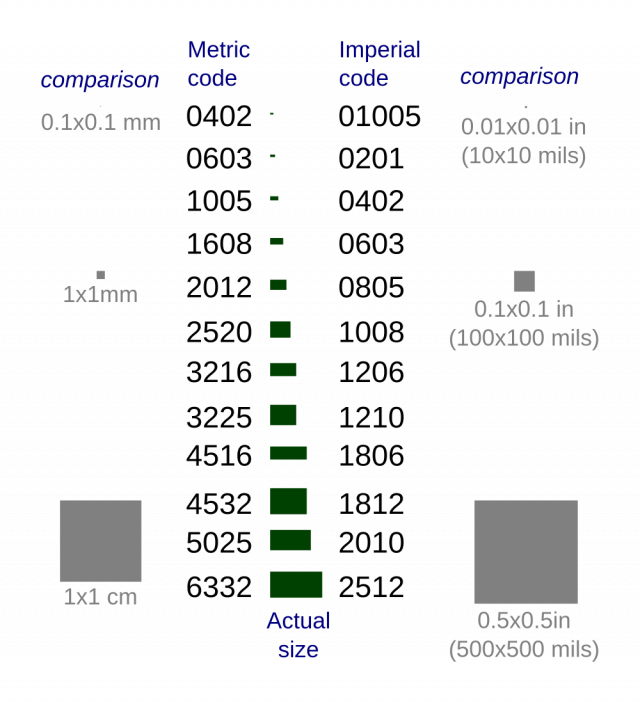
Source: Wikipedia
ASUS are managing to assemble an already difficult to assemble product, with an automated process that avoids reheating components multiple times and causing potential undue stress and degradation of the components. This is one of the many contributors to the quality of the TUF series and the reason why these video cards are a premium product.
Fans
We see alternate rotation as a standard now. The middle fan rotating in the counter direction to the others is going to reduce the turbulence and noise produced from the airflow. It works and all worthwhile manufacturers are doing this. The fans in the TUF RX 7700XT have a much longer swept curve – like a Samurai sword, which is a clear design improvement. ASUS are going to squeeze every last bit of CFM from the outer edge, which means that there is more cooling power at lower RPM, which means that cooling from high temperatures down to lower levels in the fan curve will be a lot faster and quieter than older fan designs.
Unboxing and First Impressions
Holding the box in hand and feeling the weight is a joyful experience that is the overture and promise of some next level TUF hardware!
The embossed raised badge decals are soft and supple and feel amazing on the finger tips – and no judgement should be rendered to those whom spend a few minutes running their fingers along the top.
Comprehensive presentation on the back, showcasing COOLING, DURABILITY, AESTHETICS and SOFTWARE. Each section offering a stunning image and explanation of the reasons why TUF is better than standard offerings. Most importantly on the top right of the back, is the backing that TUF series provides, boasting 3 years manufacturer warranty.
Removing the box carrier was an absolute delight with further detailing and flare on the box. It was impressive enough on its own, but glints in the light ever so. Opening the lid the card is there in all stunning glory and simply feels ‘too good’. It never looks 100% the same on the screen, but up close this does have a military tank or aircraft appearance in texture and tone. It is hard to articulate and put into words, other than to say that the design of this card does not feel cheap, but rather it instantly looks and feels like high-end purposeful quality.
Each fan has its own spinner decal with the ASUS decal in the middle, and the fan blades are highly durable, this is no cheap or flimsy fan.
The sheer amount of copper including the TUF casing means business. As with all new video cards of recent years, the active cooling system doubles and almost triples the footprint of the entire unit. This RX 7700 XT is quite manageable and will take up less space than most comparative NVIDIA counterparts.
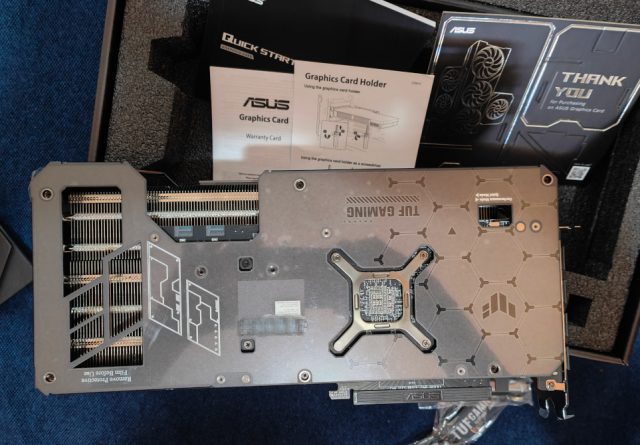
No the card is not upside down. When installed and viewed from the PC clear window, the writing on the card is easily read, including the Performance mode switch.
Included in the box is the usual suspects, including the quickstart guide, but ASUS have also provided a handy little screwdriver tool which is also the card support for horizontal mounting. This is a pretty thoughtful inclusion and gives multiple uses to a single inclusion item.
Installation
Installing the video card is as straightforward as possible. Remove the IO bracket pieces from the case, make sure the slot is dust free, slot it in and screw in place. Not forgetting the power cables!
Testing the included ASUS screwdriver did cause an unexpected mishap that was regrettably predictable but only in hindsight. The screw juts out on the side of the screwdriver which contacted the case bezel when screwing in the second screw. The ASUS screwdriver jutted out of hand and speared the highly polished surface of the motherboard water-block and LCD screen, leaving a nice indentation and scratch.
The screwdriver is simply too short to be used for installation unless you are aware and expect this to happen. When applying the Philips head tip to the screw-cap, a 90 degree angle is what should be used and this offers no clearance in cases where there is horizontal cross sections like this case.
Ours is to morn, for we can’t have nice things.
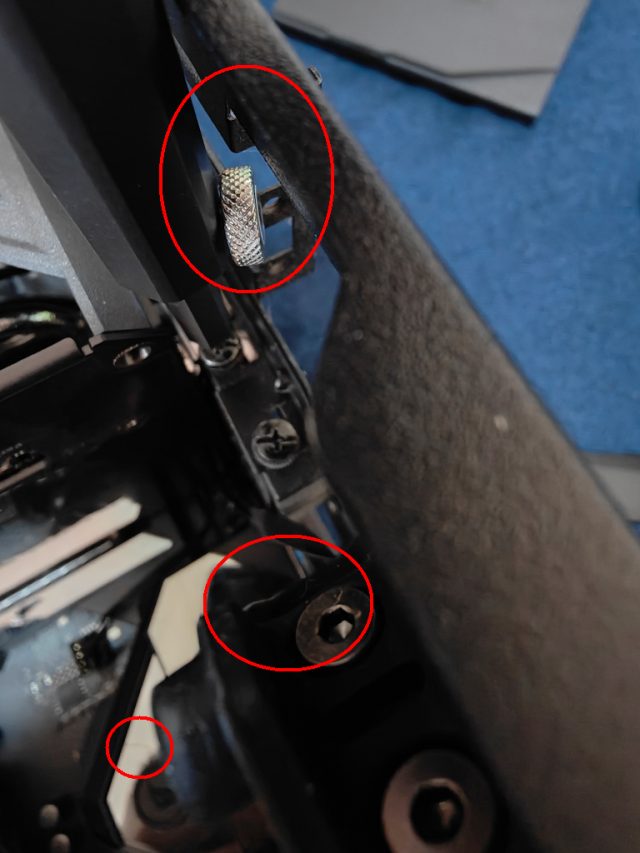
One rotation of the screw and it juts it traveled down, scratching the middle circle, landing at the bottom
AMD Adrenaline App
Everything in one place, the Adrenaline application provides performance monitoring, screen configuration, graphics settings and tweaks for games by profiling and suggesting performance enhancements to get the most out of the video card.
There are quite a lot of graphics options and it can be a little bewildering for some, but there is inline help to explain each option – although at times it would help if it were more verbose.
In a multi-monitor environment on Windows 10, the Adrenaline App kept moving to the outer left screen outside of the visual range, especially when any other full screen app or game was used. This was a little frustrating but the old tricks to move it back were sufficient.
Testing Benchmarks
Testing was performed on a multi-monitor system, including a 1080p HDMI Sony TV, a 1080p Gigabyte HDR capable monitor via Display Port, and an LG 4K HDR display via Display Port, and benchmarked with Steam installed 3dMark Demo, which limits testing resolution to only 1080p.
The two tests are Time Spy and Night Raid.
With a faster CPU, there is likely to be further gains in the score.
For comparison, the Cinebench scores:
Gaming Experience
Cyberpunk 2077 runs fantastically on the highest settings in game and where possible, tweaked in Adrenaline at 1080p (no Ray Tracing, greyed out in the game).
It took perhaps 40 minutes before any fan noise was noticeable by the system, being only the case and CPU AIO cooler that was heard.
The latest Microsoft Flight Simulator was spectacular and the performance and movement of the free-look camera and cockpit were absolutely life-like. Despite maxing out all visual settings, the performance was fantastic. The difference in the lower resolution and lower detailed textures comparatively stood out even more so, but this has always been the case.
Final Thoughts
The ASUS TUF range always delivers a robust, reliable and aesthetically pleasing product and this RX 7700XT OC Edition is no exception.
It was surprising how quiet this card is, especially when playing some titles at Ultra High settings. It did seem to handle everything thrown at it and with enough headroom to increase resolutions from 1080p, 1440p and 4K.
Benchmark scores and other public reviews place this card as a ‘middle of the road’ in performance when compared to higher-end chipsets. This would seem to be an apt fit, but it also represents exceptional value for the price and for the capability it offers. The next in line 7800XT may be the next logical step for those who want to push the envelope or require more video RAM and may be a great fit for multiple 4K displays.
The ASUS AMD TUF RX 7700XT and RX 7800XT are the perfect video cards for the average gamer, especially when upgrading from an older previous generation card. The buy-in price point is a lot more palatable than some of the NVIDIA counterparts, and the gaming performance is adequate to play most titles at High or Ultra settings at 1080p and 1440p, which is typically where most gamers prefer, especially if there is no native 4K textures or support in the title.
Of course for extreme 4K gaming and some demanding titles, well yes that is always hit and miss depending on the card and the title. The higher power consumption and heat generation of some of the latest video cards, vs the buy-in cost and the amount of gaming benefit derived is certainly a matter for the individual. One thing is certain, whichever the choice, make sure you have the physical space, CPU, RAM, power supply and cooling to support your choice.
As for the ASUS TUF AMD RX 7700XT, it performs well and it makes a lot of sense and not a lot of noise or heat.
Summary: The masterful engineering of ASUS is demonstrated in the TUF AMD RX 7700XT. This card performs well and offers great value and is the perfect mid-range entry that will suit most gamers.


